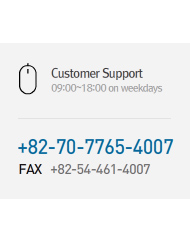Insights into Developing Customizable Products
Page info
Name Lasonya / Date25-06-15 00:12 Hit3 Comment0Link
Contents
Why are In-App Settings and Customization Important?
In-app settings and customization have become an essential part of modern mobile applications. These features allow users to adapt the application to their needs, preferences, and usage patterns. For instance, in a video streaming app, users can customize their home screen with their top-rated shows, recommended playlists, or most-viewed channels. Similarly, in a productivity tool, users can toggle or customize various settings and features.
The Benefits of Customization
Customization has several benefits for both users and developers. For users, customization allows them to make the application more intuitive and user-friendly. Users can update the application to better match their needs and preferences. For developers, mega888 customization enables them to gather valuable insights into user behavior and preferences.
Designing In-App Settings and Customization
Designing in-app settings and customization involves careful consideration of user experience and interface design principles. Here are a few best practices for designing effective in-app settings and customization:
- Use a clear and intuitive interface: Design your settings and customization options in a way that is straightforward and consistent.
- Provide clear labeling: Use clear and descriptive labels for each setting or option to avoid confusion and misunderstandings.
- Use a consistent layout: Maintain a consistent layout throughout the settings and customization options to eliminate confusion.
- Allow reset options: Provide users with an easy way to opt-out of customization and return to default settings.
Implementing in-app settings and customization requires a solid understanding of programming principles and user experience design. Here are a few key considerations for implementing in-app settings and customization:
- Use a settings framework or library: Take advantage of existing settings frameworks or libraries to simplify the development process and ensure consistency across your application.
- Utilize JSON or XML for settings storage: Store settings in a JSON or XML file to make it easier to update and manage settings across different platforms.
- Make settings accessible: Provide users with easy access to settings and customization options, ideally from the application menu or a dedicated settings screen.
Implementing customization involves more than just offering a set of settings or options. It requires a deep understanding of user behavior and preferences, as well as the ability to collect and analyze data. Here are a few best practices for implementing customization:
- Monitor user behavior: Track user behavior and preferences to collect and analyze user data to improve the application.
- Offer a wide range of options: Provide users with a wide range of options to suit their needs and preferences.
- Make customization easy to access: Make it straightforward for users to update and adjust settings.
- Test and iterate: Continuously test and iterate on your customization options to ensure they meet user needs and expectations.
In-app settings and customization are essential features that allow users to personalize their workflow and interactions with the application. By understanding the importance of customization, designing effective settings and customization options, implementing customization features, and following best practices, developers can create products that delight and retain users. By taking the steps outlined in this article, developers can create applications that deliver an exceptional user experience.
Warning: Use of undefined constant php - assumed 'php' (this will throw an Error in a future version of PHP) in /home1/icecap/public_html/theme/icecap/skin/board/basic_en/view.skin.php on line 149













